
Lenny Kravitz
Welcome to Lenny Kravitz’ home studio by the lapping shores of The Bahamas. Feeling sick with envy yet?
Photos: Matthieu Bittan
More than any other modern-day rock star, Lenny Kravitz wears his love for the music and recording gear of yesteryear on his sleeve. In this context, the recent photograph of him walking the streets of New York with the receiver of a ’60s telephone handset plugged into his mobile phone seemed very apt. The photo became a minor internet sensation, and in some quarters Kravitz was criticised for concocting such a completely incongruous and seemingly impractical piece of kit, given that the handset was several times the size of the mobile phone. On the face of it, it did appear to display an obsessive and arguably unhealthy degree of nostalgia for all things retro. But it quickly turned out that the handset was an ultra-cool, brand new 21C gadget that allows mobile phone users to prevent their brains from being fried by their mobile, while looking fashionable in the process. It’s sold for 30 bucks on Amazon and goes by the catchy name of – wait for it – Native Union MM01HH Moshi Moshi Retro POP Handset (try remembering that), or ‘POP’ for short. With Kravitz also being an interior and clothes designer, the phone gadget perfectly typified the man: ultra-hip and ultra-retro at the same time.
The ultra-hip and ultra-retro have been the main themes of Kravitz’s entire music career, probably best highlighted by the hit single (and associated film for) Are You Gonna Go My Way. Kravitz recently released his ninth studio album, Black and White America, which has garnered rave reviews along the lines of “Kravitz’ best in years.” The album contains Kravitz’ trademark mixture of soul, funk, rock, reggae, folk, psychedelic, and blues – performed, arranged and recorded in ways that are heavily influenced by the past, but with a contemporary edge. Black and White America once again sees Kravitz team up with Craig Ross, his guitarist and right-hand man since Are You Gonna Go My Way, with the two of them playing 90% of the instruments on the album. Kravitz played guitars, bass, keyboards, percussion and drums, and produced and co-mixed the album, while Ross didn’t only play guitars, but also engineered, programmed, co-mixed and occasionally manned ProTools. In addition, there were some session musicians on horns, strings and keyboards, plus guest performances by rappers Jay-Z, Drake and the Bahamian MC DJ Military.
The above may make it sound as if the making of Black and White America was in essence a two-man-plus-occasional-guest affair, but a third man was right at the heart of the album’s two and a half year gestation period. Tom ‘T-Bone’ Edmonds was the album’s main engineer, and he also co-mixed it with Ross and Kravitz. Edmonds has worked with Kravitz since 1989, and is perfectly placed to relate the ins and outs of the rock star’s working methods, and the recordings and mix of Black and White America in particular. Edmonds spilled the beans on the phone from Paris, where he was working at Kravitz’ Studio Noir. He confirmed, “Yeah, Lenny, Craig and I operate as a trio. We bounce ideas off one another all the time. If someone has an idea, it has to be approved by the other two. It’s definitely a team effort.” Before delving deeper into the recording details of Kravitz’ new album, Edmonds briefly digressed with a potted history of his own background and how he became involved with the singer.
‘POTTED’ HISTORY
T-Bone Edmonds: “I moved to Woodstock when I was very young, where I met Todd Rundgren, who became perhaps the biggest influence on my life. I began as Todd’s tour bus driver, but after hearing me play the guitar he asked me to become his guitar technician. Soon after that I became his all-round roadie, gaffer, and then assistant engineer in the studio, before he eventually asked me to engineer Patti Smith’s Wave album in 1979. From there we worked on albums with Tom Robinson, The Tubes, and Meatloaf, and I continued touring with him as well. I eventually left Todd and went to work at Bearsville Studios in New York State, where I recorded four albums with the Isley Brothers. I also worked with legendary engineer Tom Dowd – I had a lot of amazing teachers. I began working with Lenny in 1989.
“Funnily enough, in 1987 I’d retired from the music business because I was fed up doing 12-inch mixes and disco, but a friend asked me whether I would be willing to be the front-of-house mixer for Lenny. I didn’t want to, but the friend gave me a CD of Let Love Rule and I was knocked out by it. It was real music again, that went back to my past. It also had an amazing freshness to it so I went on the road with Lenny and worked with him until 2005, when I took a break, and then again from 2008, working on the new album.”

GREGORY TOWN SOUND
Black and White America was recorded at Gregory Town Sound; Kravitz’ studio which is located next to a beach at Eleuthera Island in the Bahamas. The studio houses a lot of the analogue gear, guitars, amplifiers and other music gear that the artist has collected over the years. Kravitz explains: “I initially had a garage built to have a place to store all my things, but then I decided to turn it into a studio. I designed the layout, but you never know exactly how it’s going to come out. The math may say that it’s going to sound great, but until you put a drum kit in there and start playing, you don’t know for sure. I was going for a sort of ’70s California studio with wood and cork and stone, to get that real clean sound, and it ended up working amazingly well. It immediately felt really comfortable, and of course it’s filled with equipment I’ve acquired through the years that I’m already comfortable with. And the material on the new album is strongly affected by the new studio. When I started putting the gear in the place, it sounded amazing, so it inspired a lot of what was coming out.”
Edmonds gives more details on the studio, and how it was used to record Black and White America. “Lenny began building the studio in 2008. The aesthetics are very much Lenny’s, but Ross Alexander [a Miami-based studio designer and acoustician] took care of the technical side. The studio is maybe 200 yards from the beach, and what I particularly like is that there’s a big glass door through which you can see palm trees, mango trees, and the beach. The sun is always shining in. With most studios you feel as if you’re sitting in a box. But this studio has the nicest atmosphere of any studio I’ve ever recorded in.”
RETRO HEAVEN
“When we started work on the album the studio had a Trident Series 80B desk, and the title track, Black and White America and Push were both tracked using the Trident. Then we went away for a while, and when we came back Lenny had moved the Trident to his Studio Noir in Paris, and Gregory Town Sound suddenly had a British Helios desk that used to belong to Leon Russell. It has a very different sound to the Trident, but with me engineering, no matter what I do, it’ll always sound like a T-Bone recording! [laughs]. In addition to the Helios desk, there’s also an EMI-designed Redd 37 desk, that once resided in Abbey Road Studio 1, and a lot of API mic pres, Fairchild limiters, LA-2As, EMT plates, a Bricasti reverb, the Studer J37 tube four-track [also originally from Abbey Road and used by The Beatles – Ed.], a 16-track 3M M79 machine, a Studer 827, a ProTools rig, and so on.”
There are also more modern goodies such as Apogee AD16X and DA16X converters, ATC 25 and 200 monitors, Amels Audio custom mic pres, Millennia and GML EQs, Focusrite and Waves limiters, an Eventide Ultra Harmonizer, the Lexicon 960 Digital Effects System, and mics by Coles, AEA, Audix, and others. There’s also a ProTools HD3 system clocked by an Antelope Trinity wordclock.


WHERE THE CLASP & THE ANTELOPE PLAY
The presence of endless vintage analogue gear plus some more up-to-date stuff at Gregory Town Sound won’t come as a surprise to many, but the way the singer is working with ProTools and analogue tape may. It turns out that one of the studio’s more important pieces of kit is not dissimilar in function to the POP Handset, in that it allows retro and modern gear to work seamlessly together. The piece of kit in question is called the Closed Loop Analogue Signal Processor – almost as much of a mouthful as the Native Union MM01HH Moshi Moshi Retro POP, but equally neatly abbreviated to ‘CLASP’.
LATCHING ON
Edmonds, “The CLASP interfaces our tape machines with ProTools. It’s a time compensation box that takes the sound directly off the tape repro head, but nothing gets archived to tape; instead it only gets recorded into ProTools. So you don’t have to go through the whole process of first recording things onto tape and then later dumping into ’Tools. Instead, everything gets recorded in ProTools immediately after being imbued with the qualities of analogue tape – it’s an extremely clever device. Before we had the system setup I had already recorded two songs to tape – the title track and Push – and then transferred them to ProTools; a time consuming business. But with the CLASP system I can keep things moving, which is very important because Lenny and Craig work really quickly and prefer to be rolling non-stop. They do a take, and boom, that’s it. It’s done. We had some problems initially with the old 3M machine – a 16-track M79 that has travelled quite a bit – so we subsequently switched to the Studer. I’d say about 50% of the album was recorded using the 3M and 50% using the Studer.”
BISH BASH BOSH
Edmonds stressed repeatedly that Kravitz and Ross like to work really quickly, and described in more detail how he worked with them on the actual recordings. “Those guys are amazing. They show up, and new songs are usually recorded with Lenny playing drums and Craig on acoustic guitar. We often cut the basic tracks for a song on the first take, and I’ll often ask Craig whether he rehearsed the song at Lenny’s house, and he’ll say, ‘no, I just learned it now when we cut it.’ It’s like magic. I don’t know how they do it. Lenny might say, ‘I’d like to play my funk kit today’, so he’ll go to that. I’ll use my ‘funk kit’ recording setup, and they’ll play a song two or three times that they’ve never rehearsed before. I roll the tape every time, and then, boom, it’s done!
It’s funny the way Lenny works. Every time he goes to do the vocals he’ll say, ‘Let’s do it quickly. Don’t worry about the sound – we won’t use the take, I just want to get it down.’ I always make sure I get the best sound I can, because I know it’s going to be used! He’ll always say later, ‘Can we go back to that original take we did?’ Like Lenny’s harmonies on the song Stand, that took him no time at all. He always sings the whole song too. We don’t just record a piece and then fly it around.”
“We usually begin with Craig playing the main riff,” Kravitz added, “and me playing drums along with it. I’ve already explained the arrangement to him, and I’m usually moving pretty fast because I’m in the moment, so I’m just saying: ‘Okay, intro, chorus, verse, bridge, chorus,’ and we’ll be recording from the start. I’m pretty adamant about getting the first take, because I like it when we know what we’re doing, but not really. I like being on the edge, where you know just enough to get through it, but you also get some really nice and interesting mistakes. After that we fill in the arrangement. I pick up the bass – I have three or four – and play it in the control room, and record it via my favourite Acoustic 360 amp head. After I’ve laid down some bass I’ll usually add a scratch vocal and then start to orchestrate it: guitar, percussion, keyboards and so on. I might put down string parts with a sample or a Mellotron. With the synths, I’ll have a sound in my head that I’m looking for and try different things. For this record I used more synths than any other record I’ve done. I’ve gotten into collecting them and I was just in the mood. The great thing about a synth, whether it’s from the ’60s, ’70s, or ’80s, is you can make them sound as futuristic and new as you want, but at the same time they still sound so organic. What I’m looking for in a synth is character.”
I record Lenny’s vocals with a Neumann U47, into the Helios mic pre, a Sphere EQ, the Fairchild 660 or an LA-2A and then onto tape. That’s a beautiful signal chain. Not many people have the luxury of that chain.


CAPTURE NOT FRACTURE
Clearly, the tracking approach favoured by Kravitz, Ross and Edmonds harks back to the ’70s in terms of both gear and attitude. No sweating over individual vocal lines let alone individual words or even vowels, as is common today. No micro-editing, AutoTuning, or ‘we’ll fix it in the mix’ thinking. Edmonds detests this last attitude and, just as Ross and Kravitz get their takes right the first time around, Edmonds likes to get his sound right from the start. “We don’t ‘fix things in the mix’,” stated Edmonds. “That is such a lie. I always hated hearing producers or mixers say that to their clients. What you have is either good, or it’s not. You colour things, you polish them, you pan them, you flange them, and so on in the mix, but you don’t fix anything. You can’t take a bad snare sound and make it sound great later on. Everything that we record therefore has to sound amazing from the moment we put it down! I get great sounds going in. My drum sounds are my drum sounds, and I take great pride in them!”
And so, Mr Edmonds, please enlighten us…
The engineer seemed more than happy to take the bait:
DRUM SOUNDS
Edmonds: “I don’t have just one drum miking technique. I use different microphones and different mic placements depending on what I want to do. One of my approaches is to go for a ’70s Olympic Studios drum sound, which I used for instance on the song Everything. We have two completely different drum kits in the studio, and a lot of the time we begin with tuning. For the ‘Olympic’ setup I use just three mics, one being a Neumann U67 placed right over Lenny’s right shoulder, an AKG D19 on the kick – sometimes an AKG D12 – and a Shure SM57 on the snare. That’s it, and I think that’s basically my sound. We also began recording The Faith Of A Child like that, plus another song that may be a B-side, Put Your Guns Down. All the drum mics usually went through the Helios.
“The acoustic guitars are also always recorded differently. I didn’t want a pristine guitar on Everything but something chunky and percussive, so I used a Neumann U87 with Craig sitting in the centre of our live room – no bells and whistles. That was patched into the Helios mic pre and an LA-2A limiter. For other songs we used the Neumann U67 and Craig played in Lenny’s vocal booth because when we’re cutting acoustic, Lenny is normally playing drums. I generally used API mic pres, or the Helios or Trident mic pres for the acoustics. My recording setups for the electric guitars also change depending on what guitar and amp they used. Both have a vast array of Les Paul guitars and guitar amps to choose from. I tend to use a Neumann U67, U87, or the [Shure] SM57. On the song Come Out And Get It, I had a 57. The 57 miking technique involves having it between 15 and 30cm away from the speaker – not jammed in close. The 67 and 87 are usually about a metre away, depending on the width I’m trying to achieve. The 67 has a lot more breath and air to it; I believe that mic is alive! There’s something about it. The 87 is similar, but tighter sounding.
“On this album I primarily used the Helios desk mic pres on the electric guitar mics, and also a bunch of outboard, like the Sphere 900 EQ, which is fast to set, which helps because Lenny always wants to get his ideas down immediately. The Sphere is a 12-band graphic EQ that has a really good sound about it. I’ll also use the LA-2A on the electrics, and for the rest it’s to do with the guitar, amp and pedals that Lenny or Craig has picked. On many songs I also record a ‘direct’ [D.I.’d] guitar. I pride myself in my direct guitar sounds. They allow me to get a really funky sound. The guitar goes directly into the Hi-Z instrument input of an API mic pre, then into an API EQ, then an LA-2A or sometimes a dbx160 or an LA-3A. One of the guitar tracks in the song Stand has a direct guitar sound. It’s that funky little Michael Jackson-like rhythm guitar.
I record Lenny’s vocals with a Neumann U47, into the Helios mic pre, a Sphere EQ, the Fairchild 660 or an LA-2A and then onto tape. That’s a beautiful signal chain. Not many people have the luxury of that chain. Finally, I used Coles ribbon mics for 80% of my percussion and all my horns on this record, with a 421 for the saxophone. I always recorded all the horns at the same time, all in the same room, so I had lots of leakage.”





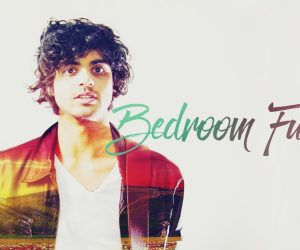

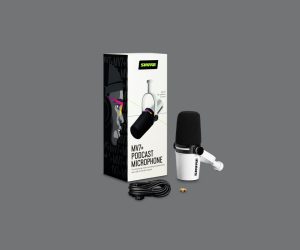
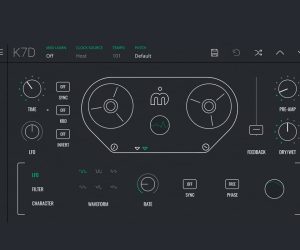
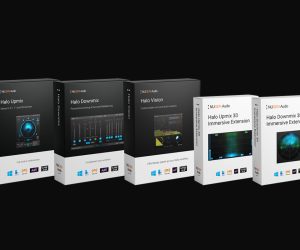
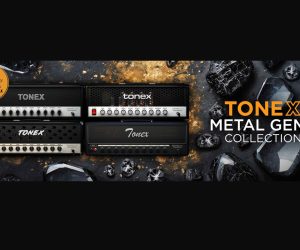

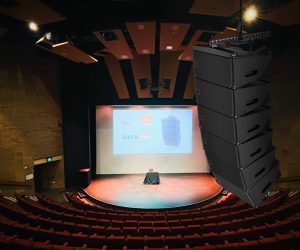





RESPONSES